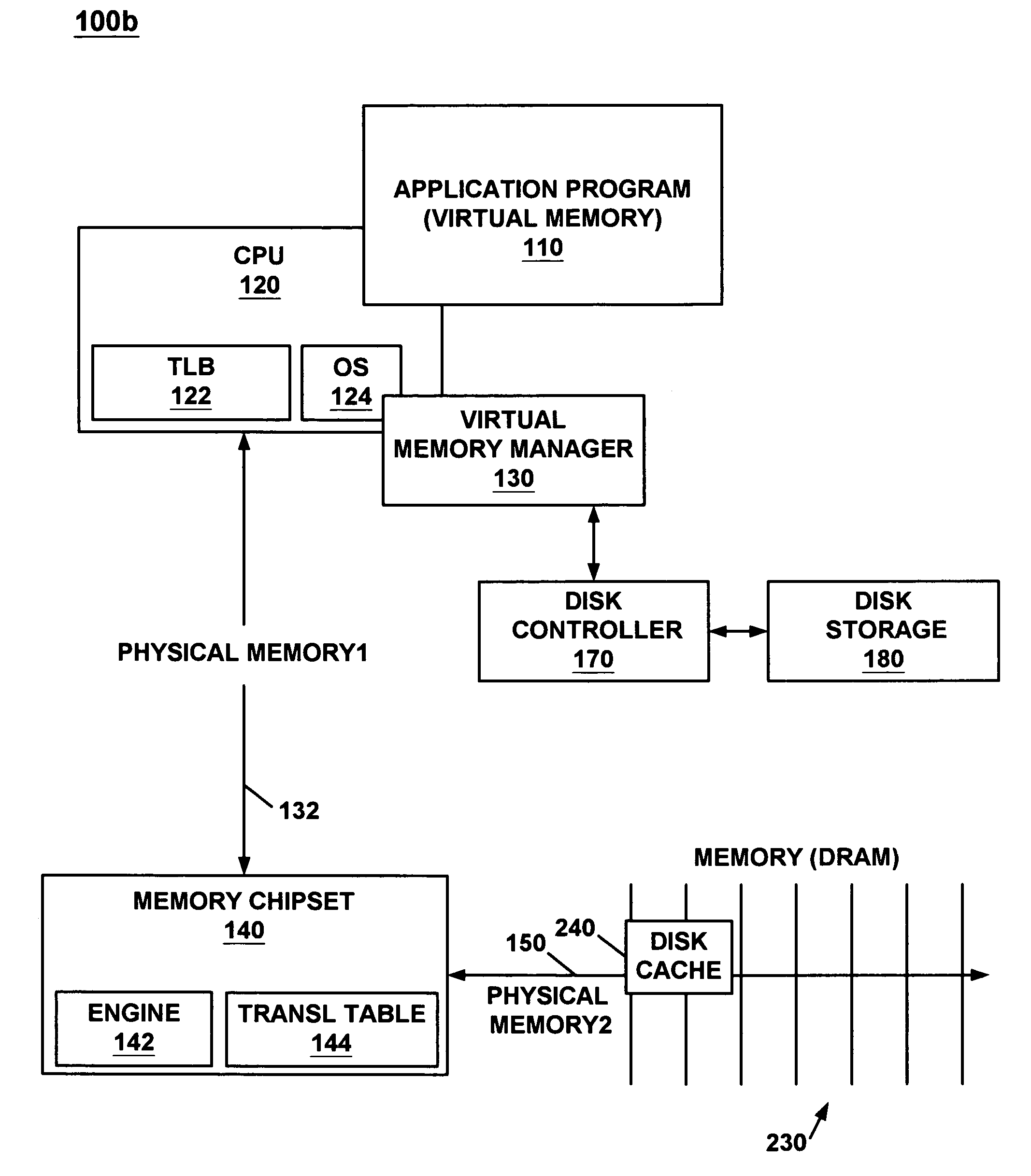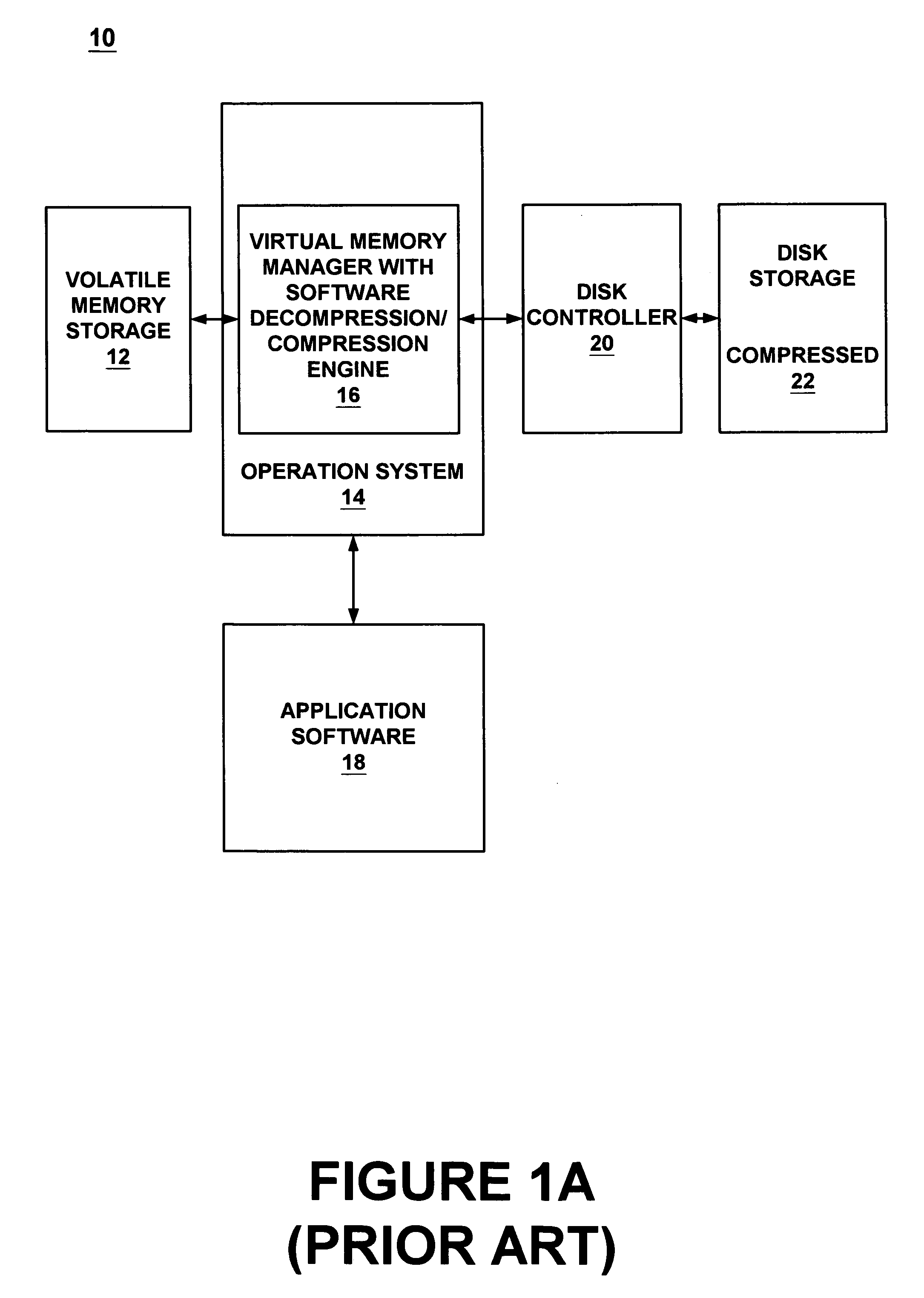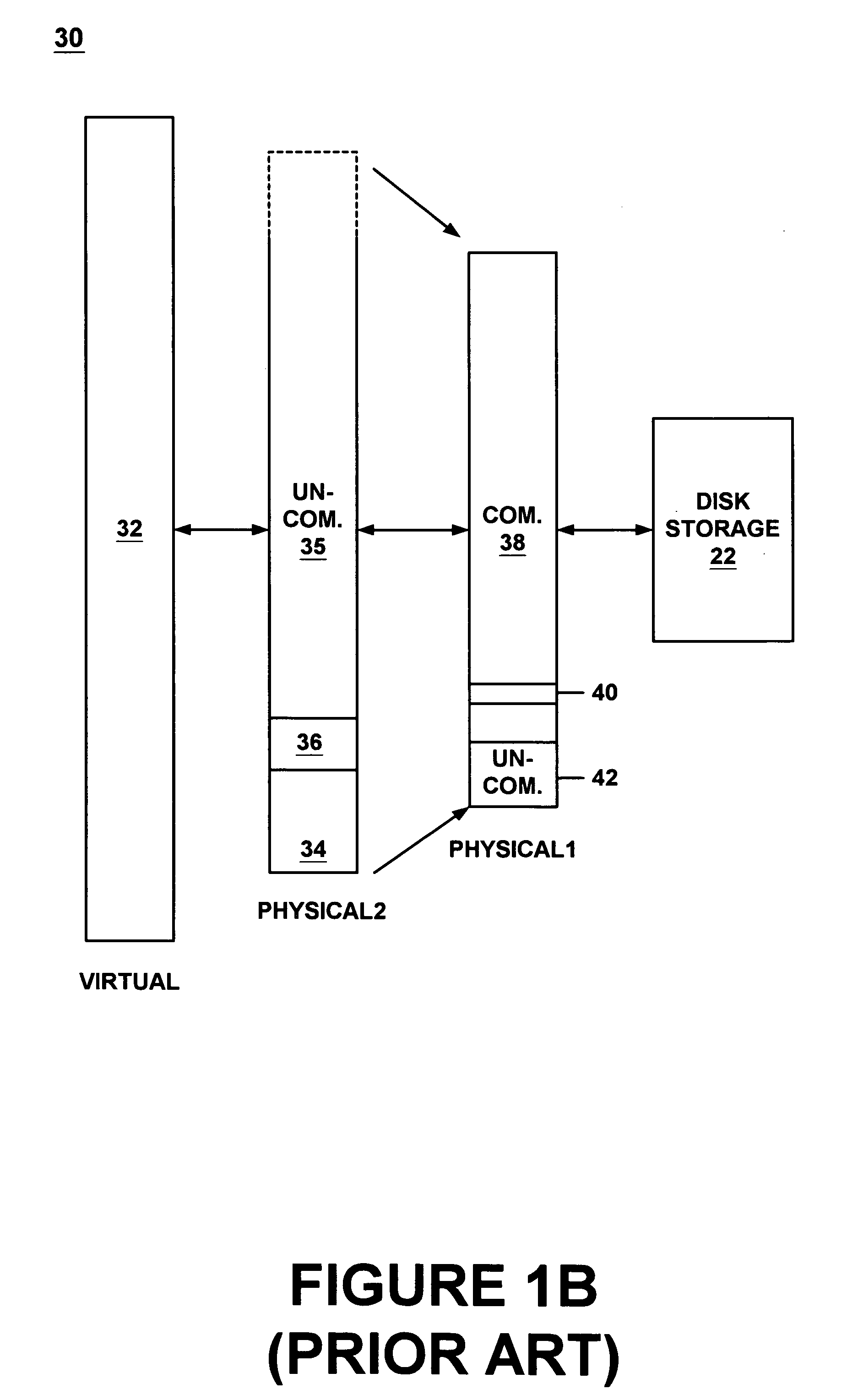Method and system for transparent compressed memory paging in a computer system
a computer system and memory paging technology, applied in the field of data compression and data management, can solve the problems of sized operating system physical memory space and uncompressed memory pages stored on disk storage units, and achieve the effects of reducing duplicate memory pages, avoiding page duplicates, and increasing system performan
- Summary
- Abstract
- Description
- Claims
- Application Information
AI Technical Summary
Benefits of technology
Problems solved by technology
Method used
Image
Examples
embodiment
Disk Caching Embodiment
[0035]FIG. 3A illustrates a memory map configuration according a disk caching embodiment of the present invention that can generally utilize the hardware system 100a shown in FIG. 2. According to this embodiment, the memory made available via memory page compression is not made directly available to the operating system, but rather is used as a disk cache to improve system performance. Because the memory made available via compression is not made available to the operating system directly, the operating system sees only a fixed sized physical memory map which is equivalent to the uncompressed page capacity of the DRAM 230. Further, all compression / decompression of the memory pages is performed transparently to the operating system because the hardware chipset 140 performs the compression / decompression and supplies only uncompressed pages to the operating system. For these reasons, any of a number of well known commercially available operating systems can be im...
PUM
 Login to View More
Login to View More Abstract
Description
Claims
Application Information
 Login to View More
Login to View More - R&D
- Intellectual Property
- Life Sciences
- Materials
- Tech Scout
- Unparalleled Data Quality
- Higher Quality Content
- 60% Fewer Hallucinations
Browse by: Latest US Patents, China's latest patents, Technical Efficacy Thesaurus, Application Domain, Technology Topic, Popular Technical Reports.
© 2025 PatSnap. All rights reserved.Legal|Privacy policy|Modern Slavery Act Transparency Statement|Sitemap|About US| Contact US: help@patsnap.com



